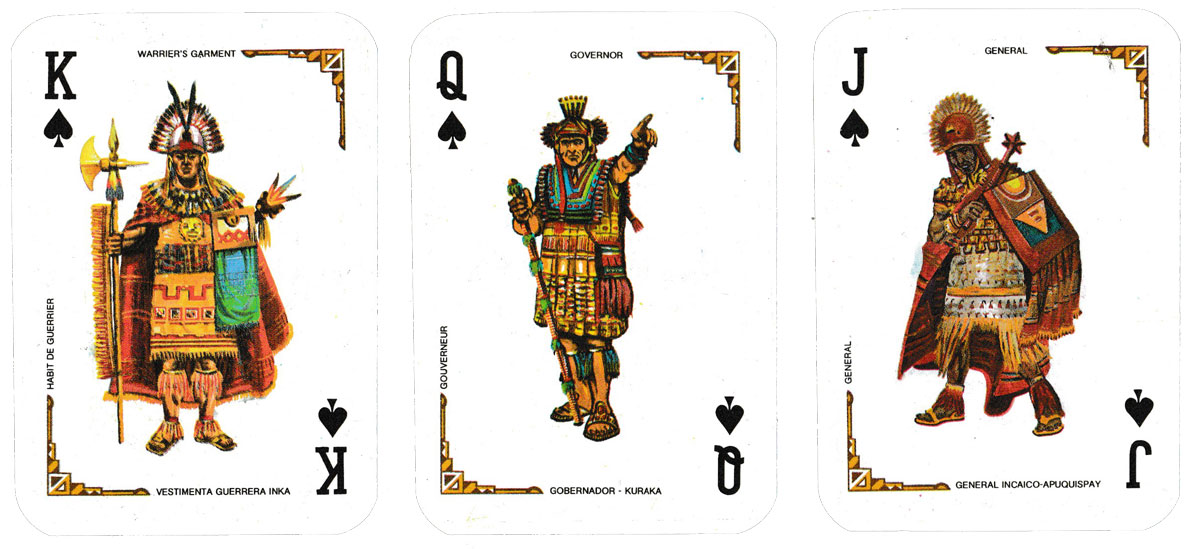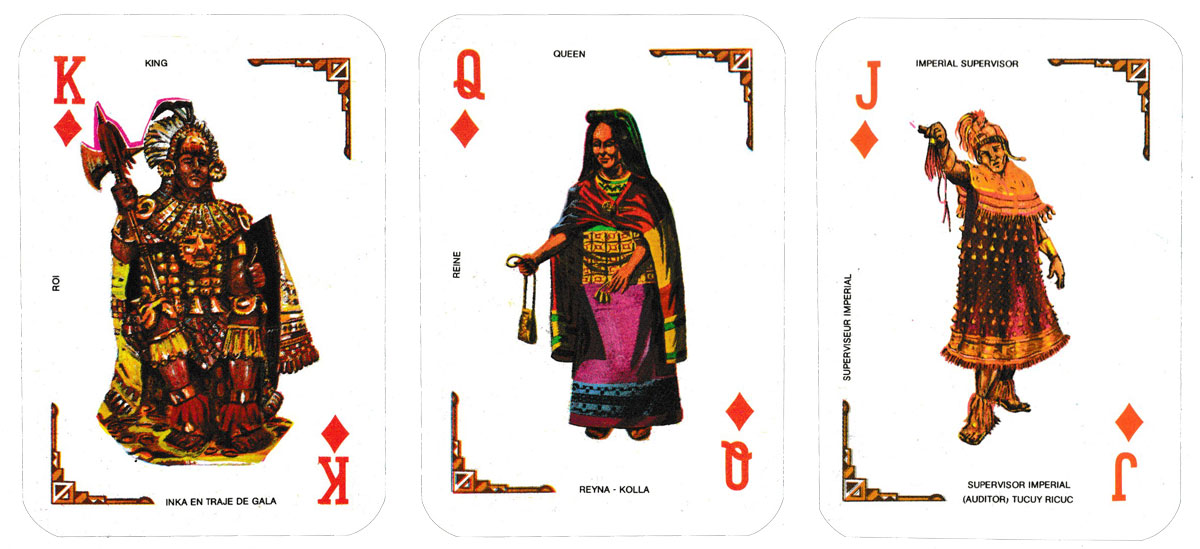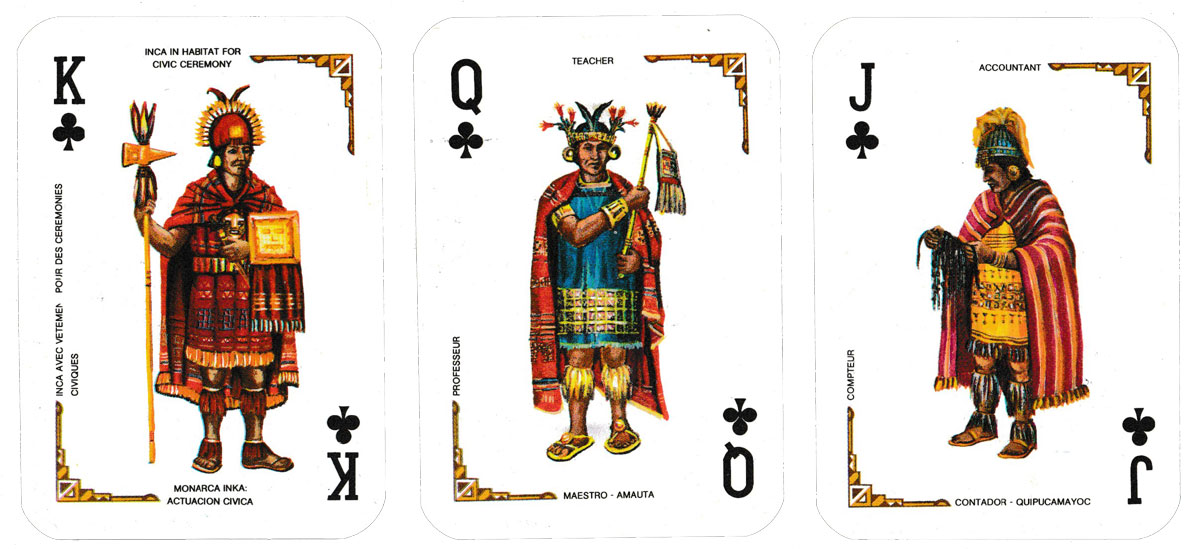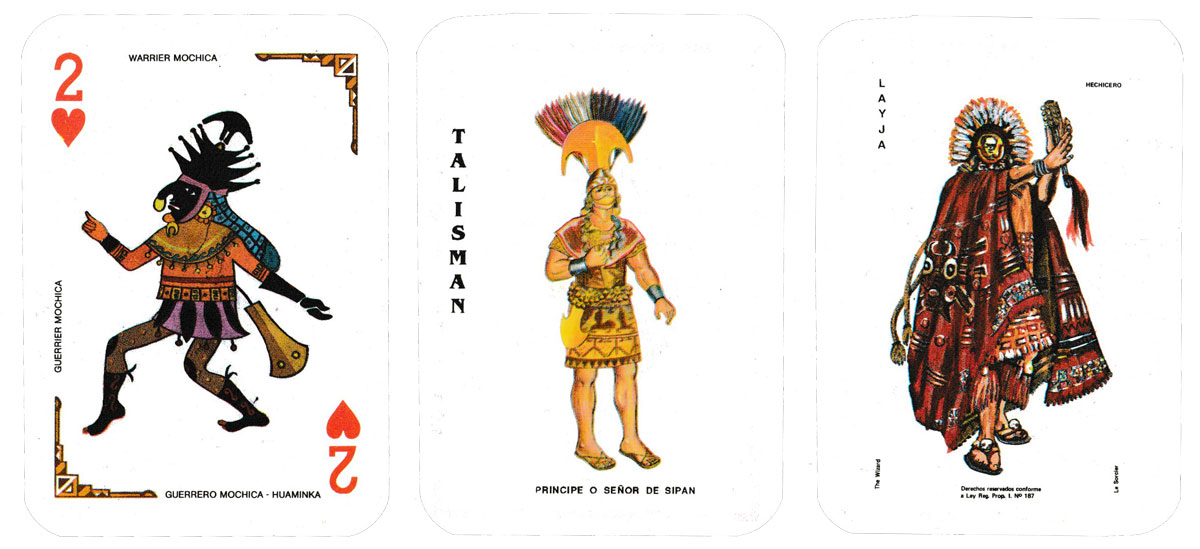Inka Naipe Souvenir
54 colour photographs of costumes and artefacts connected with the Inca civilisation, unknown publisher, Arequipa, Peru.
The Inca Empire (also known as the Incan or Inka Empire) was a relatively late development in Mesoamerican or Pre-Columbian history. The civilization arose from the Peruvian highlands sometime in the early 13th century. Earlier cultural traditions (Olmec, Maya, Toltec and Aztec) were absorbed within a new political, military and commercial framework. The Inca Empire became the largest empire in pre-Columbian America and was finally suppressed by the Spaniards in the 16th century.
‘Inka Naipe’ Souvenir
The court cards depict figures in Inca costume while different artefacts are displayed on the numeral cards. Full colour throughout. Titles in three languages in the border of each card, though the English and French translations are full of mistakes. There are two extra cards entitled “Talisman” and “Layja” (wizard or sorcerer?) which could act as Jokers but are not marked as such. Indices: K, Q, J, A. See the box►


Above: ‘Inka Naipe’ Souvenir, unknown publisher, Arequipa, Peru. 52 cards + 2 extra cards in tuck box, glossy, poor quality card. Size: 62 x 89 mm. Maker and date unknown.
Speaking Objects
Objects which pre-date the Spanish conquest, apart from being beautiful or valuable, also tell stories: why or for what were they made? There is virtually no first-hand information available. The majority of the population died from Western diseases as a consequence of the Spanish conquest. Most of the gold artefacts were melted down by the Spaniards. Throughout the Inca kingdom tombs and temples have been looted with the same fever as expeditions scouring the Amazon forest today. Many European artists, architects and collectors have found these objects inspiring, because of their exceptional craftsmanship and aesthetic qualities.

By Roddy Somerville
Member since May 31, 2022
Roddy started collecting stamps on his 8th birthday. In 1977 he joined the newly formed playing-card department at Stanley Gibbons in London before setting up his own business in Edinburgh four years later. His collecting interests include playing cards, postcards, stamps (especially playing cards on stamps) and sugar wrappers. He is a Past President of the Scottish Philatelic Society, a former Chairman of the IPCS, a Past Master of the Worshipful Company of Makers of Playing Cards and Curator of the WCMPC’s collection of playing cards. He lives near Toulouse in France.
Trending Articles
Popular articles from the past 28 days
Related Articles
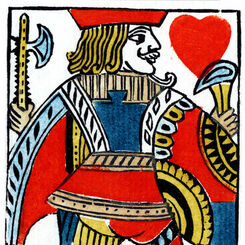
Woodblock and Stencil Jack of Hearts
A limited edition art print of the Jack of Hearts 1984 woodblock joker.
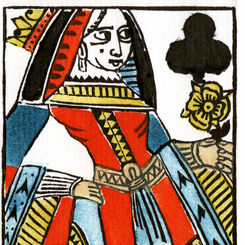
Woodblock and Stencil Queen of Clubs
A limited edition art print of the Queen of Clubs 1984 woodblock joker.
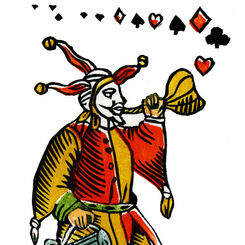
Woodblock and Stencil Joker
A limited edition art print of the 1984 woodblock joker.
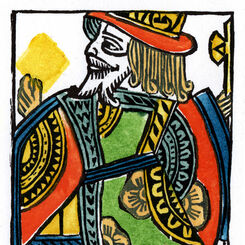
Woodblock and Stencil King of Diamonds
A limited edition art print of the King of Diamonds 1984 woodblock joker.
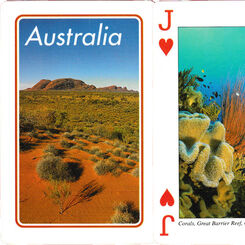
Scenic Views of Australia
54 different scenic views of Australia in full colour.
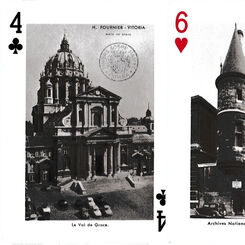
Monuments de Paris
‘Monuments de Paris’ souvenir playing cards produced by Heraclio Fournier, c.1964.
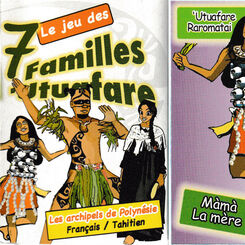
Le jeu des 7 Familles ’Utuafare
Colourful Happy Families game from Tahiti depicting costumes from different archipelagoes.
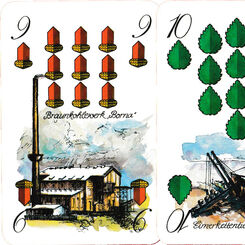
Borna Skat
Publicity pack for the Saxon town of Borna, with designs by Andreas Wachter.
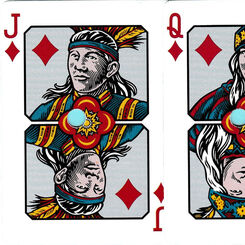
Mohegan Sun playing cards
Mohegan Sun playing cards published by Gemaco for Mohegan Sun casino.
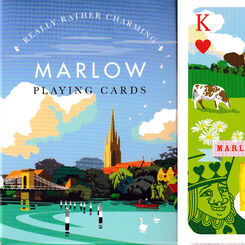
Marlow playing cards
Visitor attractions and businesses to be found in Marlow, Buckinghamshire.
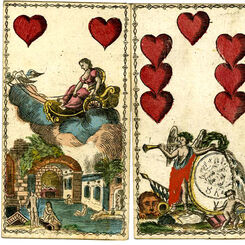
Heathen Wars
German-suited ‘Heathen War’ playing cards published by Joseph Fetscher, Munich, c.1820.
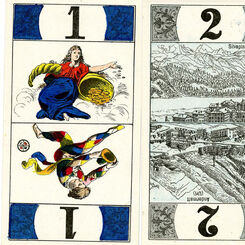
Swiss Scenic Tarock
Scenic Tarock deck produced by Fabrique de Cartes J. Müller & Cie (Schaffhouse), Suisse.
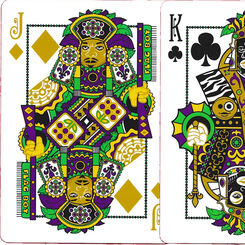
Mardi Gras playing cards
Mardi Gras playing cards illustrated by Dave Edgerly, USA, 2015
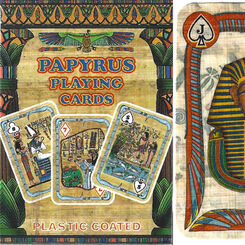
Papyrus Playing Cards
Papyrus playing cards distributed by Egypt Trade, c.1996.

Pendleton playing cards
Pendleton playing cards inspired by indigenous American artwork, USA, 2019.

Aztec Codex playing cards
Aztec Codex playing cards illustrated by Emmanuel Valtierra, USA, ©2015.
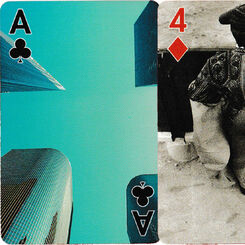
Mario Testino playing cards
A selection of Mario Testino’s photographic work in various fields, notably fashion.
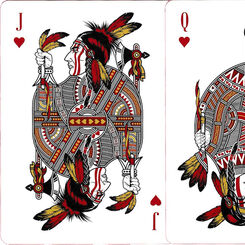
Malam playing cards
Malam playing cards created by Michael Muldoon, USA, 2015.
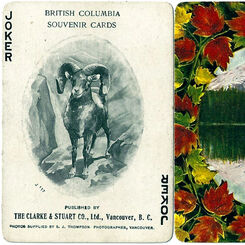
British Columbia Souvenir
British Columbia Souvenir Playing Cards by The Clarke and Stuart Company
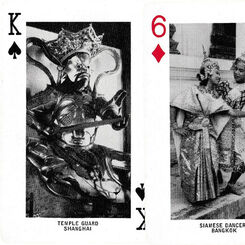
American President Lines
American President Lines shipping souvenir playing cards, early to mid-1950s.
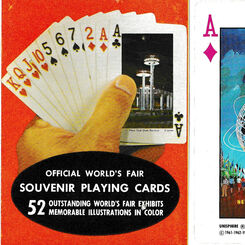
Official World’s Fair Souvenir, USA, 1964-6
Official souvenir pack showing 52 coloured exhibits from the New York World’s Fair, 1964-6.
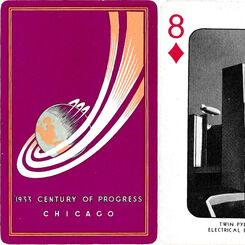
Century of Progress
‘Century of Progress’ Exposition playing cards produced by Western Playing Card Company, USA, 1933. ...
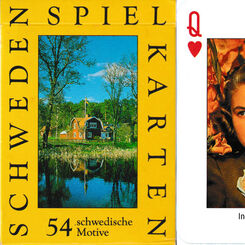
Schweden Spielkarten
54 different souvenir views of famous people and places in Sweden.
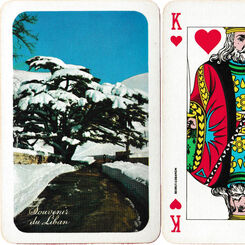
Souvenir Playing Cards from Lebanon
Multicoloured Belgian/Genoese pattern cards, probably printed by Fournier for Lebanon.
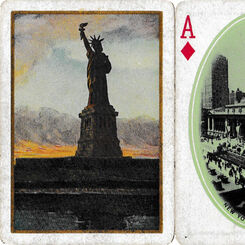
New York City souvenir
New York City souvenir playing cards with 53 different views of interest, USA, 1915.

Nation’s capital souvenir playing cards
Nation’s capital souvenir playing cards published by the United States Playing Card Company, USA, 19...
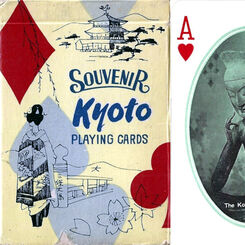
Kyoto Souvenir Deck
Kyoto Souvenir playing cards by Nintendo aimed at the up and coming tourist industry, 1950s.
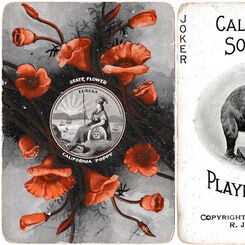
California souvenir playing cards
California souvenir playing cards, USA, 1898 and 1907.
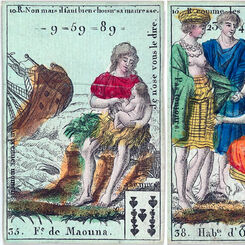
Costumes des Peuples Étrangers
Costumes des Peuples Étrangers & Jeu d’Or dedicated to young people and likely used for games and fo...
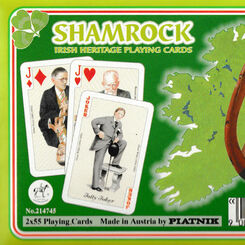
Shamrock Irish Heritage playing cards
A celebration of some of Ireland’s most famous patriots, politicians and poets.
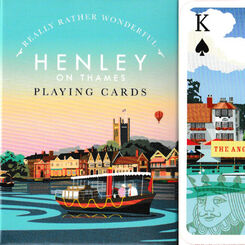
Henley-on-Thames playing cards
Calendar events and visitor attractions to be found in Henley-on-Thames, Oxfordshire.
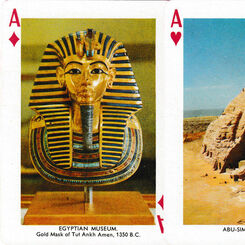
Souvenir Playing Cards of Egypt
55 different photographic views of Egypt in full colour.
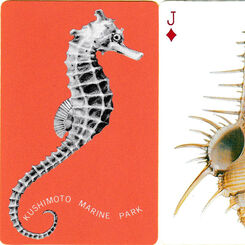
Kushimoto Marine Park
Kushimoto Marine Park souvenir playing cards published by Nintendo, Japan.
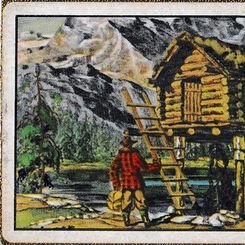
Alaska scenic playing cards
Alaska scenic playing cards featuring scenes of Alaskan life, USA, c. 1960.
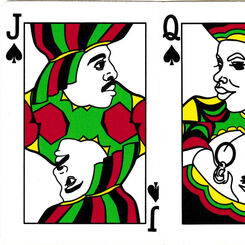
Race Card
‘Race Card’ playing cards published by the Concept Card Co., New Orleans, Louisiana, USA.
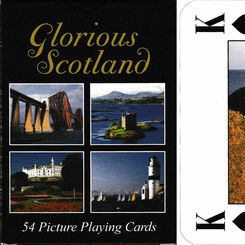
Glorious Scotland
54 photographic views of Scotland by Duncan I. McEwan.
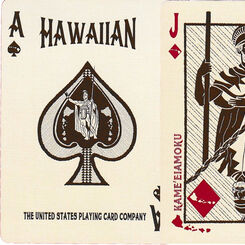
Hawaiian playing cards
Hawaiian playing cards in the style of classic Hawaiian wood carvings, USA, 2015.
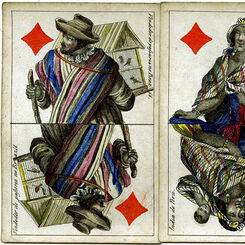
South American Costumes
Costumes of people of Brazil, Peru and Mexico, with views of Rio de Janeiro on the aces.
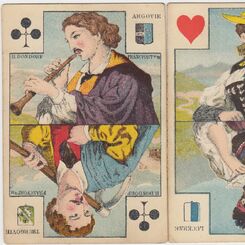
Vues et Caractères Suisses No.228
A Swiss souvenir pack by Dondorf
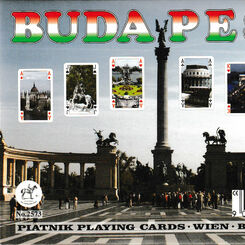
Budapest souvenir
Colour views of the Hungarian capital, Budapest, on all the courts and Aces.

Pan-American Exposition Souvenir
Pan-American Exposition Souvenir Playing Cards, Buffalo, NY, 1901.
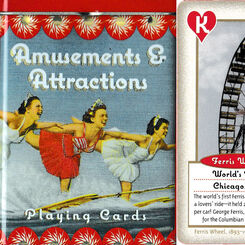
Amusements and Attractions
‘Amusements and Attractions’ playing cards showing the fun and excitement of America’s amusement par...
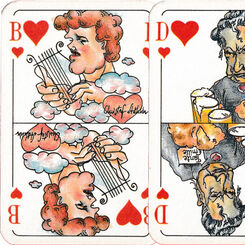
Das Tübinger Skatspiel
Pack devised by Volker Scheub depicting characters associated with the city of Tübingen.
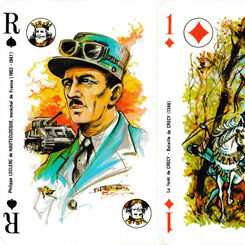
Conseil Général de la Somme
Famous people and places of the Somme department in northern France, with designs by James Hodges.



